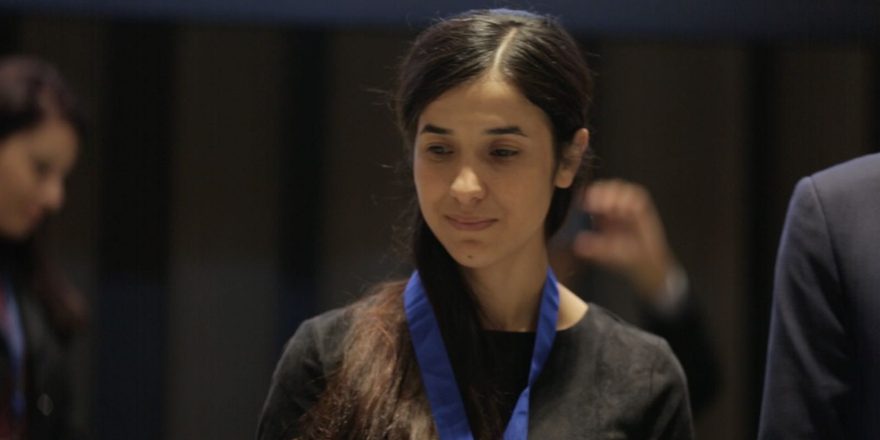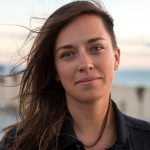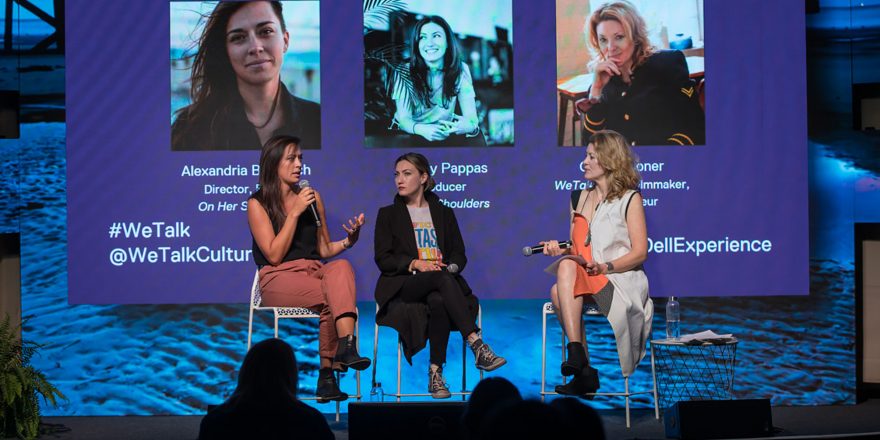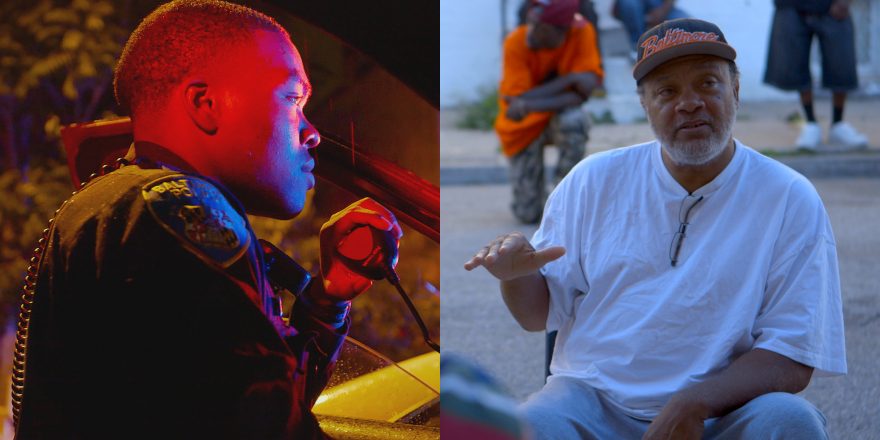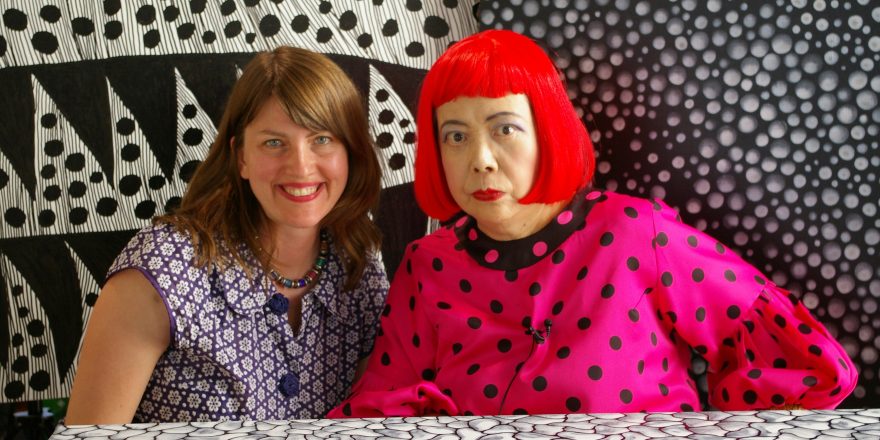I often get asked, in one way or another, if it was difficult emotionally for me to film On Her Shoulders. To hold the camera up to Nadia’s face, to film in the refugee camps, to witness the pain of this community in person. It seems like an obvious answer, “Of course.” But what people rarely ask is if it was difficult emotionally to edit the film.
The three-month production of On Her Shoulders came with many painful challenges, and much of the film reflects my own conflicts I went through as a storyteller and the pain witnessed during my time with Nadia and her team. During the summer of 2016, Nadia and her team were moving at a blinding speed campaigning for the Yazidis. Nadia was doing multiple interviews a day, meeting with politicians regularly, giving several testimonies and speeches a week, and traveling around the world at a relentless pace.
Before I met Nadia, I had a lot of anxiety about gaining access into her life. What would I ask for? How close would she be willing for me to get? When would I say it was enough? From what media I had seen of her, she seemed like a reluctant activist – how would I know if she really wanted me to film? Before we met in person, Nadia and her team knew the documentary was happening – they had already approved it. But I sat down with them anyway and asked again if this was something they would be willing to do – especially Nadia. I explained what all it would entail, as best as I could. No one really understands what documentary filmmakers do – not even us.
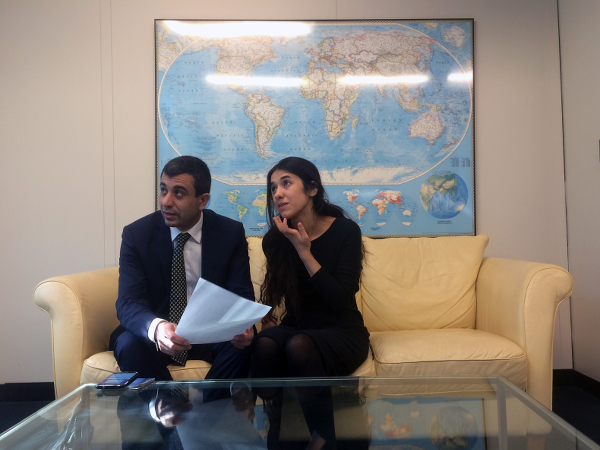
Nadia was familiar with the news media and how they operated. Often, it was a grueling, invasive interview in which she had to tell them every horrific detail of her captivity and then they sometimes filmed additional footage, telling her to walk down a path or sit on a park bench as she stared off into the distance. I explained that I wouldn’t ask her to do anything. I would be around filming after her speeches just as much as during them – if not more. The things I would film (like her getting ready in the morning) might not seem relevant, but they would show another side of her life that people didn’t get to see. I would respect her space, and stop anytime she wanted me to, but I would be around much more than anyone else she had been interviewed by. I shut up and waited for a response. Nadia was calm. She shrugged, gave a gracious smile, and said it was fine. That sudden acceptance from her broke my heart. She had to say yes to me, just like she felt she had to say yes to everyone else, to take pieces of her, to do anything she could, however painful, for the cause.
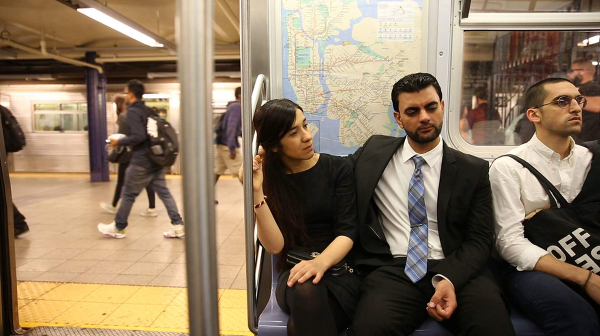
That first day was only the beginning of the heartbreak. The first 10 days of the shoot left me shaken to my core. Witnessing Nadia being interviewed, being asked about every gory detail, watching her closely through a long lens as her eyes, exhausted from crying, turned dark and empty … it made me question everything we do as storytellers. It made me question our responsibility to survivors, our responsibility when packaging and presenting these stories to the world. What questions are we asking? What are we not asking? How are we knowingly portraying women, persecuted minorities and survivors within simplified stories that the world will hear, proudly cry for, then forget?
After those first 10 days of filming with Nadia, I left for a week to do a shoot at the Democratic National Convention that I had previously committed to. Nadia sent me sad emojis on WhatsApp and said she missed me. I could hardly breathe when I thought of her; I was terrified to fuck this up. Without clearly articulating it to myself, I made a choice – I needed to focus on filming this story the best way I could. Being a cinematographer requires a lot of technical knowledge, but for a doc you also have to be story-aware, stay sharp, paying attention to everything around you, while anticipating future moments. I couldn’t let my own emotions get in the way of filming – it would be a disservice to the Yazidis, to Nadia, to everything they’ve been through. My responsibility was to them, not catering to my own feelings. I had to bottle up this pain.
The shoot went on. When survivors cried in front of me, I made sure I was in focus. When Nadia wrote her speech for the second anniversary of the Yazidi genocide and quietly commented aloud that at that very moment two years ago ISIS was surrounding their village, I made sure my exposure was right. When she looked out wearily into the masses of people cheering for her, after receiving another accolade celebrating her activism for something she wished so badly had never happened in the first place, I made sure my audio levels were OK, my next shot anticipated, my hand steady on the camera. My hand steady. My hand steady.
Toward the end of the shoot, Nadia was preparing to be named a goodwill ambassador to the UN. She had finished doing her hair and came out of the bathroom and sat across from me to nibble on the corner of a watermelon slice. She seemed to hardly ever eat before these nerve-wracking events and I tried not to mention it, but it scared me how small she was getting. The morning had been tense, her mind seemed somewhere else, as it often did. She sat down and made fun of herself for something, laughing and then telling her partner Abid something in Kurdish I didn’t understand. I turned the camera on and looked at her through the lens. Then, in a rare moment, she turned to me and explained herself in broken English: “Today is very hard for me, I don’t know why.” I had seen her texting on her phone earlier – that usually meant she was talking with her remaining family members. I kept my eyes on her, the camera recording. I asked cautiously, “Is it because … you’re thinking of your family?” She nodded and said, voice quavering, “I wish my mom was here.” My hand steady on the camera, I watched her from across the table as she started to cry. I told her that her mother would be so proud of her today. The words caught in my throat. She knew by now that no one like me, a person who could never really understand what she had been through, could say anything that resembled comfort. I looked out of the corner of my eye at the camera and saw she was perfectly in frame. I felt horrible for checking. My hand steady, my body painfully distant from her, I kept filming. In that moment, in that space between us, I lost a piece of my own humanity in order to get that shot. The part of my humanity that would throw the camera aside and hug this person. People cry during this moment of the film. Does that make it worth it?
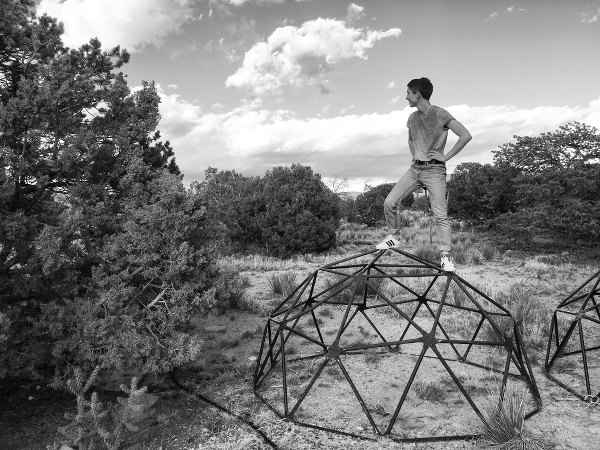
On Her Shoulders was commissioned to be a short film. I knew that when I started, but I had fought for it to be a feature-length film very soon after meeting Nadia and argued with the producers all the way through production. They wanted a short because that’s what they did. But I knew the story needed room, for people to breathe, to understand, to feel. We were the only filmmakers with access like this. I felt strongly that a feature was the only way to do this story justice. But they said no, even if I found outside funding for it. When the shoot was over, and I was about to start the edit, the producers called me on Skype, to see my face, to hear me say I would be editing a short film. I lied.
In the next six weeks, a feature-length film was edited out of my parent’s garage with my assistant editor, Michael Bucuzzo, a transcriber, Frank Quatrone, and two translators. I had a contractual obligation to deliver a rough cut within that time, so I thought I was at least doing that part of the deal. It was a huge risk, and I’m pretty sure the stress in those six weeks took years off my life. I’m so thankful to Michael for taking that risk with me, never questioning it, and being such a solid collaborator and friend in the edit. He lived with my family during that time and my mom still calls him her adopted son.
Those six weeks were a blur and I hardly had a moment to process anything. After we had the first 95-minute rough cut, I made a “Hail Mary” call to Bryn Mooser, the CEO of the film’s production company, RYOT, to confess what I had done and pitch this film as a feature. It was terrifying, but I was stubborn and had prepared for weeks for the call. As we spoke, I walked all over the desert landscape outside of my parent’s house in Santa Fe, New Mexico. We were on the phone for about an hour, but in the end, he got it. We were given the green-light. I hung up and collapsed.
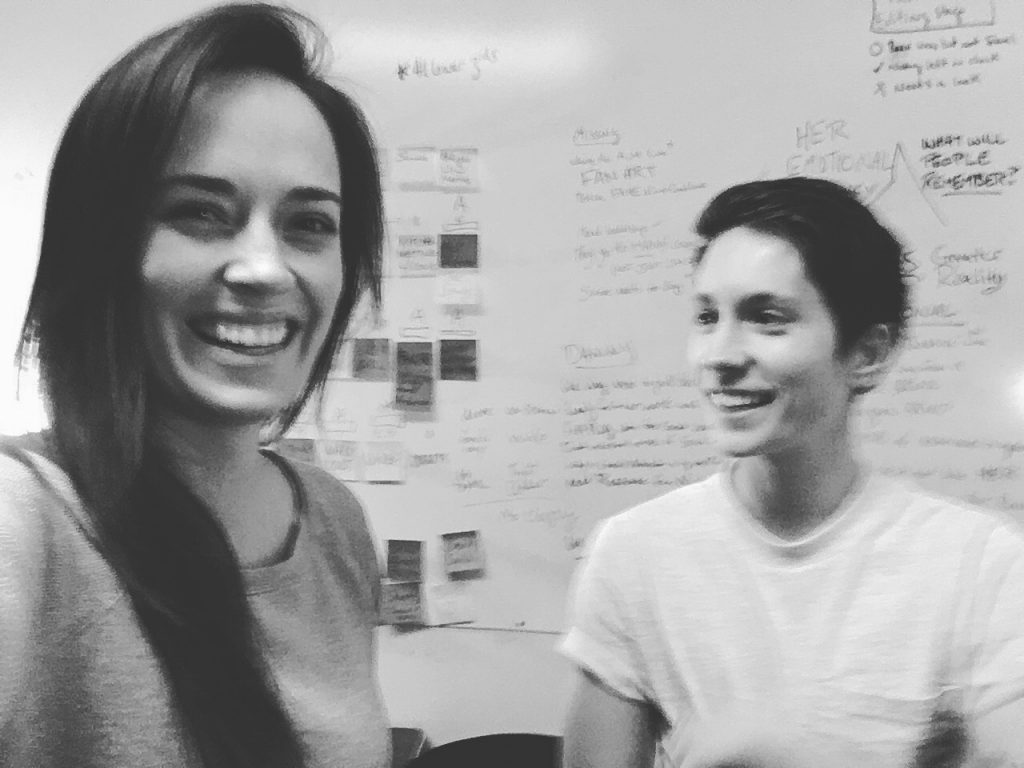
We pulled back on submitting to spring film festivals in order to allow more time for the edit. The translators we had been working with were wonderful, but one didn’t understand Arabic and the other had a hard time with English. Nadia speaks a mix of Arabic and Kurmanji Kurdish and I needed to have more nuanced conversations about what she was saying with someone who spoke and understood English well. After an extensive search, we finally found someone who spoke all three languages well, Hishyar Abid. He was based in London, but was working as a translator in Athens, Greece. As I was on my way to Athens to work with him, he was re-stationed to the island of Samos to work at a refugee hotspot. So, for three months, I lived on a tiny Greek island while editing the film.
Filming with Nadia was one thing, but absorbing and re-watching over and over the footage of Nadia’s testimonies, archival news clips of the genocide, and ISIS propaganda videos every day over a year-long edit caused the secondhand post-traumatic stress that I will most likely be dealing with for years to come. However, during those three months in Samos, time slowed down. I stopped replying to producing emails, I stopped being on weekly calls for the film, I focused on the story, and the story alone. I was able to walk away from the computer, sit and write and think about the story away from the images that were already burned into my head. I had the space to unpack what I had witnessed and felt while I was with Nadia. That opening of emotions eventually poured into the edit, as I had to finally feel everything I had bottled up for so long. At times, unpacking these emotions felt unbearable, but it made the film what it is today.

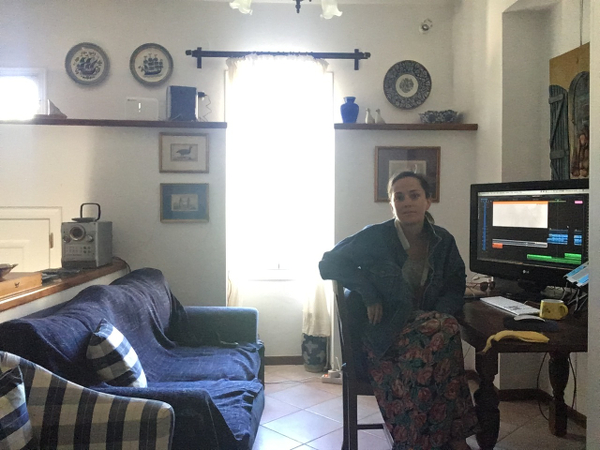
Looking back, that time in Samos is where the real work of crafting the story was done – most of it with me sitting at a tiny cafe watching the fishing boats rock back and forth. Knowing how crucial that time was for me and the film, I decided to establish an editing residency in Santa Fe, New Mexico. I have for years wanted to build this healing and productive space for myself and close friends who I knew were also editing emotionally challenging films. But after the experience of editing On Her Shoulders, and asking many other filmmakers about their post-production process, I became determined to make this space for the larger filmmaking community.
The retreat (yet to be named) will be comprised of a specially designed post-production facility, creative space, and dwellings just outside of Santa Fe, New Mexico, where filmmakers can complete up to three months of documentary post-production or fiction scriptwriting while receiving mental, physical and community support. A major focus of the retreat will be to grant time and space to filmmakers who are Indigenous peoples, people of color, LGBTQIA identifying, people with disabilities, and/or women. We’re currently building partnerships within the filmmaking industry and in the local Santa Fe community while surveying filmmakers and industry professionals to make sure this space is thoughtfully designed and structured in the best way possible – to fulfill the current needs of filmmakers. The project will break ground in the spring of 2020, opening in the spring of 2021.
All images courtesy of Alexandria Bombach.



